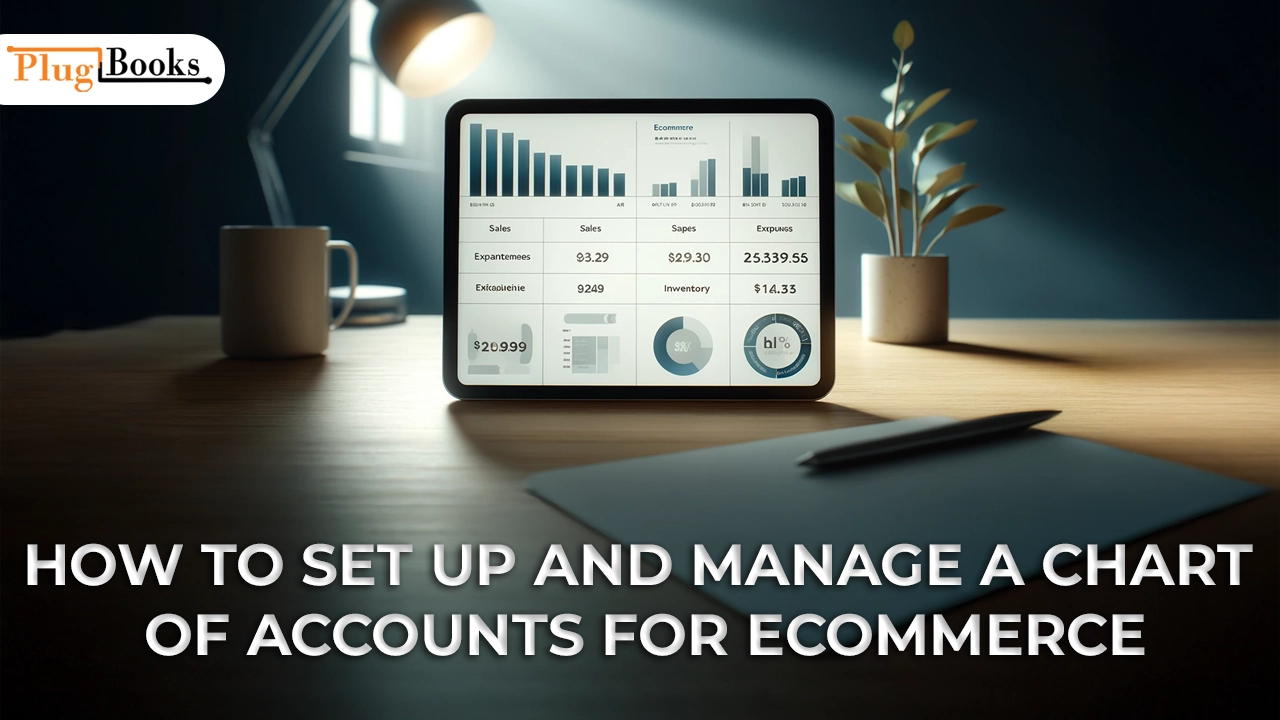Any company’s financial system consists fundamentally in the chart of accounts (COA). It makes it simpler to classify and monitor the finances of your company as it is a well-organized list of all the used accounts to document financial activities.
Whether your company is big or small, effective financial reporting and analysis depend on your knowledge of accounting setup and management.
We shall explore what it is, how to set it up, and some best practices for handling it in accounting software like QuickBooks in this post. We will also demonstrate how PlugBooks, utilizing Zero and QuickBooks, can automatically generate it for eCommerce companies.
What Does a Chart of Accounts Include?
Usually featuring sections for assets, liabilities, equity, income, and spending, a standard accounting. These categories guarantee correct accounting and help you arrange your purchases.
The primary categories are broken down here in a brief fashion:
- Resources owned by your company—that is, cash, tools, inventory—are assets.
- Liabilities: Loans, accounts payable, debts or obligations owing to others
- Owner’s share in the company—that is, retained earnings, shareholder equity—
- Income: Sales, service income—that is, revenue your company generates
- Operating expenses—that is, wages, utilities, supplies—that your company bears
Every one of these groups will have many narratives inside it. Under “Assets,” for example, separate records for cash, inventories, and accounts receivable.

How to Set Up a Chart of Accounts
Especially if you use contemporary accounting software like QuickBooks, organizing your accounts is a simple task. Still, it’s crucial to ensure the chart structure meets your company’s demands.
Here’s a chart of accounts setup guide:
- List the demands of your company. Review first the areas of your company that require tracking—that is, those pertaining to sales or software subscriptions. You should photograph these regions.
- Sort Account Books: As noted, you would desire primary categories including assets, liabilities, income, and spending. Under each, make subcategories unique to your company.
- Simplify it: Don’t complicate matters—A basic system will simplify your accounting chores and increase effectiveness.
- Utilize account numbers: Assigning account numbers to every account helps you to arrange and classify transactions more easily. Customizable numbering is made possible using Quick Books Online.
- Change as Necessity demands: Your company could call for adding or deleting accounts as it expands. Simple editing of a QB Online chart of accounts allows for modifications at any moment.
The Mattox Format for the Chart of Accounts
Designed for logical organization of the accounts, the Mattox style for it is a conventional accounting method. Many companies utilize it to guarantee uniformity in financial reporting even though it is not required.
If your business deals with several auditors or accountants, this structure might be extremely helpful. Using the Mattox form will help you to keep consistency throughout your financial records.

Where Does Security Belong in a Chart of Accounts?
If you’re wondering what chart of account security falls under, costs often fit this area. Security-related charges You could choose to establish a particular account for expenses linked to security, for “Security Services Expense” or “Security Equipment.” It lets you monitor these expenses and grasp how they affect your whole budget.
Using PlugBooks for an Automatic Chart of Accounts Setup
Setting up and managing yours doesn’t have to be a hassle. With PlugBooks, your accounting is automatically generated, making the process much simpler for eCommerce businesses. If you’re using platforms like QuickBooks or Zero, PlugBooks takes care of the hard work for you.
This automatic feature means you can spend less time manually entering accounts and more time focusing on your business. Whether you’re looking for an easy accounting setup or need to edit it in QB Online, PlugBooks offers a seamless solution that integrates with your eBay and Amazon stores.
Conclusion:
Managing the money in your company depends on a neat accounting. It guides your tracking of income and spending, financial data analysis, and decision-making process. The correct configuration guarantees accurate and simple navigation of your financial information, therefore making a great impact.
PlugBooks can automatically create and manage your chart of accounts for companies using QuickBooks or Zero, therefore removing the uncertainty from financial reporting. Having the correct tools in place may make all the difference in your financial performance, regardless of your level of beginning or optimization of your present setup.





One thought on “How to Set Up and Manage a Chart of Accounts for eCommerce”